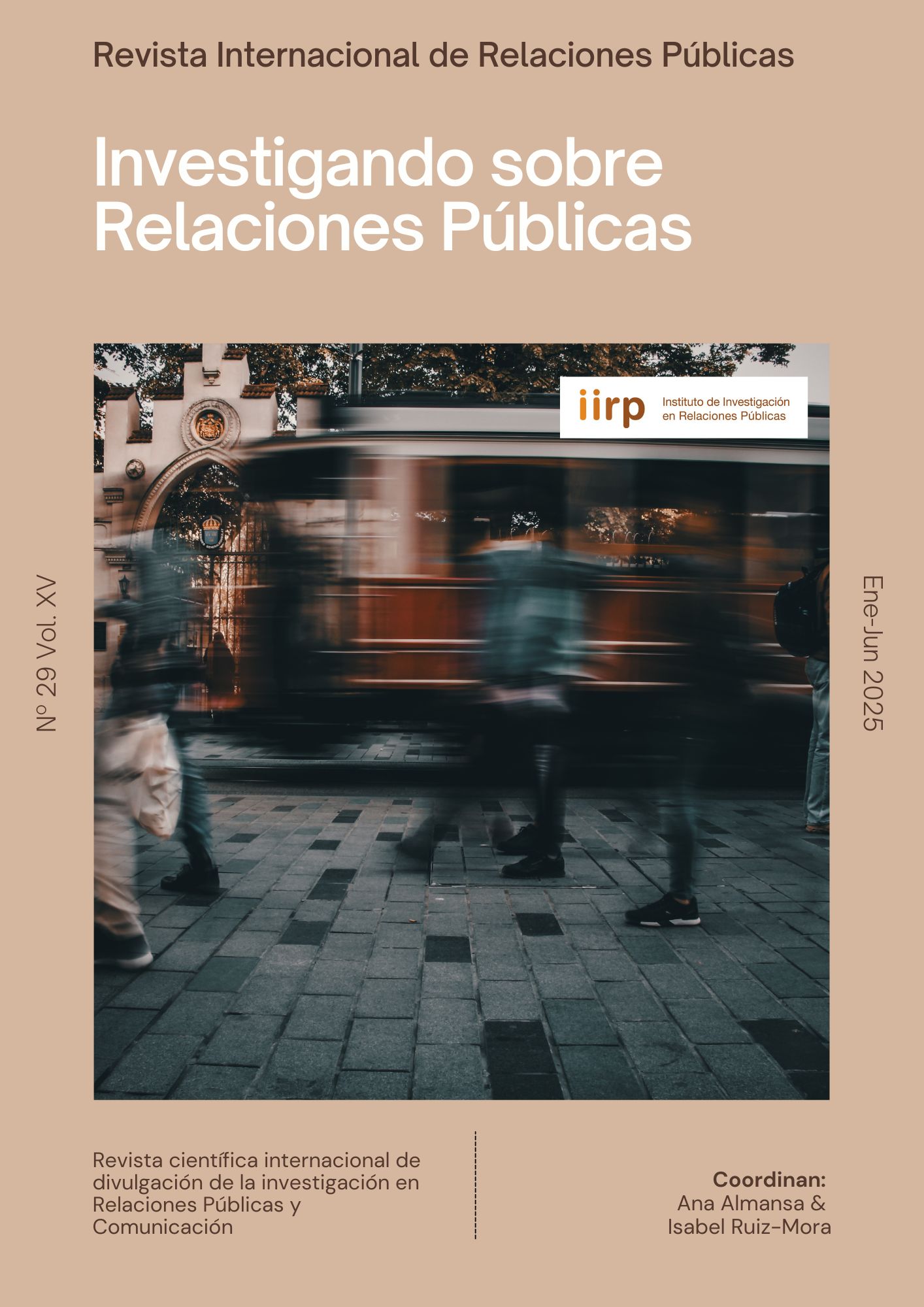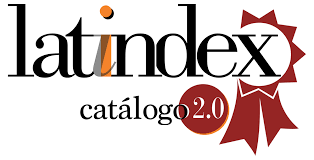Neurocommunication and public relations for sustainability
Exploratory study of the museums of Puebla, Mexico
DOI:
https://doi.org/10.5783/revrrpp.v15i29.884Keywords:
neurocommunication, museums, public relations, climate changeAbstract
In the last decade of the 21st century, the most vulnerable populations in the world have suffered the consequences of climate change, facing enormous risks: a 40% drop in agricultural yields that has generated food insecurity; nearly 100 million inhabitants who have needed assistance due to meteorological disasters; and, 24 million inhabitants of 140 countries who have suffered forced displacement due to climate alterations in their regions (Klein et al., 2014; FAO, 2022; UN-Habitat 2021). The United Nations, through its 2030 Agenda, has highlighted the importance of raising public awareness and mobilizing collective efforts towards sustainable development (UN, 2023). At the 2024 UN Assembly, a call was made to join forces and work together for a more sustainable future, inviting all social actors in the world to promote solutions with a focus on dialogue and social commitment (Guterres, 2024). In Mexico, initiatives aimed at biodiversity and human well-being do not resonate in society (ECLAC, 2020; CEIBA, 2023), therefore, it is necessary to strengthen the social and cultural capital that allows the construction of collective solutions to the global problems derived from climate change.
Museums, as custodians of humanity's cultural heritage, have the capacity to involve citizens in the solutions required by these global challenges, therefore, they must develop public relations strategies that generate: “a more participatory and committed relationship between cultural institutions and their audiences, favoring the symbolic appropriation of heritage” (Capriotti and Pardo Kuklinski, 2021, p. 97). This perspective turns museums into platforms that not only preserve, but communicate, mobilize and transform cultural heritage, aligning their function with the objectives of sustainable development. From this perspective, neurocommunication understood as the study of the processing, interpretation and reception of information (Ledesma and Fenger, 2016) offers a powerful way to achieve the symbolic appropriation of cultural heritage in museum visitors. This article explores elements of neurocommunication in visitors to museums in the municipality of Puebla in Mexico, to contribute to the development of their public relations strategies aimed at sustainability.
In this sense, from the perspective of neurocommunication (Ledesma and Fenger, 2016), the following research questions are posed: What are the cognitive elements experienced by visitors to the museums of the municipality of Puebla in Mexico?, and What are the behavioral elements experienced by visitors to the museums of the municipality of Puebla in Mexico? To this end, a quantitative exploratory study was carried out, which in the light of Hernández, Fernández and Baptista (2022) will allow us to identify neurocommunication patterns in museum visitors. The results in the cognitive dimension show a tendency for sensory, informative experiences and with an environment that minimizes distractions. Regarding the behavioral dimension, museum visitors state that they enjoy more an experience that allows them to participate in an active, reflective and emotional way. According to the results obtained, it is suggested to design public relations strategies that develop multisensory experiences, reflective community actions and the generation of emotional ties with their interest groups, in such a way that museums stop being contemplative spaces and become training platforms for social agents of sustainable development.
Downloads
References
Álvarez de Mon, S. (2019). Neurocomunicación: Cómo la neurociencia revoluciona la forma en que comunicamos. Gedisa.
Barrientos, A. (2022). La neurocomunicación aplicada al aumento de la demanda turística. Revista Internacional de humanidades. GKA Ediciones.
Bourdieu, P. (1986). The forms of capital. En J. Richardson (Ed.), Handbook of theory and research for the sociology of education (pp. 241-258). Greenwood.
Burness, A., & Lloyd, A. (2022). Museum education and sustainable development: A public pedagogy. Australian Journal of Environmental Education, 38(1), 88–100. https://doi.org/10.1017/aee.2021.20
Capriotti, P., & Pardo Kuklinski, H. (2012). Relaciones públicas: estrategias y tácticas. Paidós.
Castells, M. (2009). Communication power. Oxford University Press.
Carbonell, E. G. & Viñarás, M. (2021). Museos y desarrollo Sostenible. Gestión músicaeística y comunicación digital para alcanzar los ODS. Revista de Ciencias de la Comunicación e Información, 26 , 79-108 http://doi.org/10.35742/rcci.2021.26.e143
CEPAL. (2020). Inclusión y cohesión social en el marco de la Agenda 2030 para el Desarrollo Sostenible: claves para un desarrollo social inclusivo en América Latina. CEPAL. https : //www.cepal.org
CEIBA (2023). Biodiversidad y sostenibilidad en México: diagnóstico y propuestas. https://www.ce.org .mx
Cuenca Amigo, M. & Cuenca, J. (2020). El desarrollo de audiencias en España reflexiones desde la teoría y la práctica. Deusto Digital.
Damasio, A. R. (1999). The feeling of what happens: Body and emotion in the making of consciousness. Houghton Mifflin Harcourt. https://philpapers.org/rec/DAMTFO
Delgado, L. E., Rodríguez, M. Á. & Díaz Funes, P. A. (2022). Resiliencia, optimismo, esperanza y autoeficacia: capital psicológico clave para el desarrollo humano en tiempos de incertidumbre. En Orejuela, J., García, M. & Villada, L (eds.). Psicología de las organizaciones y del trabajo: apuestas de Investigación III. Fondo Editorial Ceipa. https://repositorio.ceipa.edu.co/handle/20.500.13018/148.
Escobar, A. (2015). Territorios de diferencia: La ontología política de los “derechos al territorio” en América Latina. Universidad del Cauca.
FAO (2022). Cambio Climático y Seguridad Alimentaria. Disponble en: https://www.fao.org/climatechange/16615-05a3a6593f26eaf91b35b0f0a320cc22e.pdf
Feldman, L. (2017). La vida secreta del cerebro. Cómo se construyen las emociones. Paidós.
García, R. & Sotelo, P. (2020). Prácticas culturales y participación ciudadana en museos mexicanos: Retos y oportunidades. Revista Mexicana de Estudios Culturales, 12(2), 45-61.
Gazzaniga, M. S., Ivry, R. B. & Mangun, G. R. (2021). Neurociencia cognitiva: la biología de la mente (5.ª ed.). WW Norton & Company.
Giraldo, C., & Cardona, M. (2018). El museo como espacio de construcción social. Revista de Estudios Culturales Latinoamericanos, 25(2), 78-89.
Grunig, J. E., & Hunt, T. (1984). Managing public relations. Holt, Rinehart & Winston.
Guterres, A. (2024). Noticias ONU. https://news.un.org/es/story/2024/09/1533046
Hernández, R., Fernández, C., y Baptista, P. (2022). Metodología de la investigación (7.ª ed.). McGraw-Hill.
Hernández, O. (2021). Aproximación a los distintos tipos de muestreo no probabilístico que existen. Revista Cubana de Medicina General Integral, 37(3). http://scielo.sld.cu/scielo.php?script=sci_arttext&pid=S0864-21252021000300002
Hosagrahar, J. (2023). La cultura, elemento central de los Objetivos de Desarrollo Sostenible. Unesco.org. https://courier.unesco.org/es/articles/la-cultura-elemento-central-de-los-objetivos-de-desarrollo-sostenible
ICOM. (2022). ICOM. Normas y directrices de los museos. Obtenido: https://icom.museum/es/recursos/normas-y-directrices/definicion-del-museo/
ILAM. (2019). Instituto Latinoamericano de Museos y Parques. Recuperado el Agosto de 2023, de Informe del ILAM: https://ilamdocs.org/cat/605/
INEGI (2020) Resultados del Censo de Población y Vivienda 2020: municipio de Puebla. Recuperado de: https://www.inegi.org.mx/app/cpv/2020/resultadosrapidos/default.html?texto=Puebla
INEGI. (2023). Estadística de Museos. MÉXICO: INEGI. Disponible en: https://www.inegi.org.mx/contenidos/saladeprensa/boletines/2024/EstMuseos/EstMuseos2023.pdf
Janes, R. R. & Sandell, R. (2019). Museum activism. Routledge.
Jancovich, l. (2015). Breaking down the fourth wall in arts management. The implictions of engaging users in decision-making. International Journal of Arts Management, 18(1), 14-28.
Klein, R. J. T., Midgley, G. F., Preston, B. L., Alam, M., Berkhout, F. G. H., Dow, K., & Shaw, M. R. (2014). Adaptation opportunities, constraints, and limits. In Climate Change 2014: Impacts, Adaptation, and Vulnerability. Part A: Global and Sectoral Aspects. Contribution of Working Group II to the Fifth Assessment Report of the Intergovernmental Panel on Climate Change (pp. 899-943). Cambridge University Press. https://www.ipcc.ch/report/ar5/wg2/
Ledesma M.y Fenger, N. (2016). Síntesis de la neurocomunicación avanzada ¿Cómo conseguir éxitos sorprendentes con las demás personas? Revista Educación Continua, Escuela de Altos Estudios en Educación Continua EAEC.
Lin, H., Gao, X., Jin, Z., & Zhang, J. (2024). Embodied power: How do museum tourists’ sensory experiences affect place identity? Tourism Management, 102, 104703. https://doi.org/10.1016/j.tourman.2023.104703
Lindauer, M., & Wisser, C. (2022). Sensitive Pictures: Emotional Interpretation in the Museum. Museum & Society, 20(1), 63–78. https://doi.org/10.29311/mas.v20i1.3757
López, M. (2021). Tecnología y cultura: Impacto de la realidad aumentada en la museografía mexicana. Anales de Comunicación, 5(1), 102-118.
López, M., & Díaz, F. (2020). Relaciones públicas en museos: Estrategias para la construcción de valor en el siglo XXI. Estudios sobre Comunicación y Cultura, 14(1), 89-105.
Morrone, A. (2006). Guidelines for measuring cultural participation. UNESCO Institute for Statistics.
Norman, N. (2005). El Diseño emocional, Paidós.
Noguera Vivo, J. M. (2010). Relaciones públicas 2.0: Estrategias para la construcción de comunidades en la era digital. Revista Internacional de Relaciones Públicas, 5(2), 35-51. http://dx.doi.org/10.5783/RIRP-3-2012-04-71-90.
Ostrom, E. (1990). Governing the commons: The evolution of institutions for collective action. Cambridge University Press.
ONU, (2023). Objetivo 13: Adoptar medidas urgentes para combatir el cambio climático y sus efectos. Naciones Unidas. https://www.un.org/sustainabledevelopment/es/climate-change-2/
ONU-Habitat, (2022). Sequías, tormentas e inundaciones: el agua y el cambio climático dominan la lista de desastres. https://onu-habitat.org/index.php/sequias-tormentas-e-inundaciones-el-agua-y-el-cambio-climatico-dominan-la-lista-de-desastres#:~:text=Las%20inundaciones%2C%20las%20sequ%C3%ADas%20y%20otras%20cat%C3%A1strofes,que%20sufren%20por%20esos%20fen%C3%B3menos%2C%20advirti%C3%B3%20la
Pine, B. J., & Gilmore, J. H. (1999). The Experience Economy: Work is Theatre & Every Business a Stage. Harvard Business Press.
Putnam, R. D. (2000). Bowling alone: The collapse and revival of American community. Simon & Schuster.
Sandell, R. (2017). Museums, moralities and human rights: Contested social values in the exhibitionary context. In J. Dodd & R. Sandell (Eds.), Museums, equality and social justice (pp. 195-208). Routledge.
Sacco, P. L., & Blessi, G. T. (2020). Cultural capital and sustainable development: The role of museums in ecological transition. Springer.
SIC. (2023). Museos en México. Obtenido de Sistema de Información cultural: https://sic.cultura.gob.mx/ficha.php?table=museo&table_id=1588
Sierra Bravo, R. (2001). Técnicas de investigación social: Teoría y ejercicios prácticos (9.ª ed.). Paraninfo.
UNFCCC. (2015). The Paris Agreement. Disponible en: https://unfccc.int/process-and-meetings/the-paris-agreement/the-paris-agreement
Worts, D. (2017). Museums and the dynamic of community: An evolving notion of civic responsibility. Curator: The Museum Journal, 60(2), 191-206. https://doi.org/10.1111/cura.12205.
Downloads
Published
How to Cite
Issue
Section
License
Copyright (c) 2025 Patricia Duran Bravo

This work is licensed under a Creative Commons Attribution-NonCommercial-NoDerivatives 4.0 International License.
Authors publishing in this journal agree to the following terms:
a. Authors retain copyright and grant the journal the right to be the first publication of the work as licensed under a Creative Commons Attribution License that allows others to share the work with an acknowledgement of authorship of the work and initial publication in this journal.
b. Authors may separately enter into additional arrangements for non-exclusive distribution of the version of the work published in the journal (e.g., placing it in an institutional repository or publishing it in a book), with an acknowledgement of initial publication in this journal.
c. Authors are allowed and encouraged to disseminate their work electronically (e.g. in institutional repositories or on their own website) before and during the submission process, as it can lead to productive exchanges, as well as earlier and higher citation of published work (see The Effect of Open Access).





